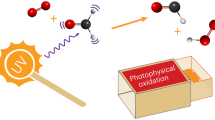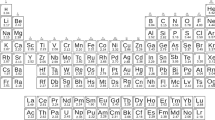Abstract
OF the many values which have been suggested for D(CO), the high value of 11·1 eV. and Hagstrum's value of 9·61 eV. seem most likely, as recently pointed out1. Dr. Howell's discussion of the F1II-state certainly gives strong support to the latter value. It should be remembered, however, that Birge–Sponer extrapolations for highly excited states may not be reliable, and indeed may be quite anomalous, as for silver hydride. Also it is likely that for the excited states of carbon monoxide there may be potential maxima, and the limit of the extrapolation will then be the maximum instead of the dissociation limit. In the reaction zones of flames much of the light emission is due to chemiluminescence, and it is not easy to account for this unless we are able to postulate reactions which are highly exothermic and which require the high value for D(CO). The 9·61 value would, however, give a more satisfactory comparison with the iso-electronic molecule N2, for which I favour a dissociation energy of 9·76 eV.
This is a preview of subscription content, access via your institution
Access options
Subscribe to this journal
Receive 51 print issues and online access
$199.00 per year
only $3.90 per issue
Buy this article
- Purchase on Springer Link
- Instant access to full article PDF
Prices may be subject to local taxes which are calculated during checkout
Similar content being viewed by others
References
Gaydon, A. G., "Spectroscopy and Combustion Theory", 190 (2nd edit., 1948).
Author information
Authors and Affiliations
Rights and permissions
About this article
Cite this article
GAYDON, A. Letters to the Editor. Nature 163, 773–774 (1949). https://doi.org/10.1038/163773b0
Issue Date:
DOI: https://doi.org/10.1038/163773b0
Comments
By submitting a comment you agree to abide by our Terms and Community Guidelines. If you find something abusive or that does not comply with our terms or guidelines please flag it as inappropriate.



